|
|

|
|
|
|
|
|
|
|
|
|

|
|
|
|
 |
|
|
|
|
|
|

|
|
| Two years ago Ronart redesigned the W152 into the MK2 version. Extensive changes were made in terms of quality, engineering and specification. The changes incorporated years of manufacturing experience in assembly, testing and maintaining the cars and included ten years of customer feedback.
Many design changes were made in one major step forward which has been an evolution for the Ronart Sports Car. One that Ronart believe have led to a product that will take the company forward for the coming millennium.
We strongly recommend that you sample the very latest cars and confirm the excellent reports and comments made by both customers and journalists.
|
|
|
|
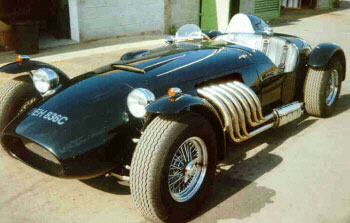 |
|
|
|
|
| The first Ronart W152 MK2 - June 1997 3.8 litre Jaguar Power, tuned, triple Webers |
|
|
 |
|
 |
|
|
|
|
|

|
|
| Sales of the MK2 version are buoyant with over thirty Mk 2 chassis now manufactured in eighteen months. Ronart have had a good advance sales order book for the W152 with over 60% now being factory built orders.
The W152 in component form has only an eight week lead time.The Ronart company is now in its fourteenth year and over the years it has gained a high reputation for its products both in UK and abroad. Whilst most cars are for the UK market we have LHD cars in South America, USA, Japan, Germany & France. The W152 was first conceived in 1981, designed in 1984 and the first car completed in 1986; production starting a year later.
The Ronart is not a copy, or replica of any car but is a reflection of the most exciting era of racing cars. The late fifties saw the tide turning towards small 1.6 litre rear/mid engined cars like Cooper, Lotus which somehow lost the attractive body styling lines of the great cars like the Maserati 250F, Mercedes W196 and the Vanwall.
|
|
|
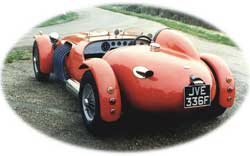 |
|
|
| The Ronart has been designed to recreate the flowing lines of the last of the big front engined racing cars. It is 'today's classic' and one that will never go out of style and is unique. |
|
|
|
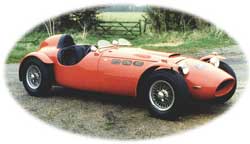 |
|
|
|
 |
|
 |
|
|
|
|
|
|

|
|
| Ronart consider their cars to be one of the finest engineered specialist Sports Cars available today and part of that is due to the development program pursued by Ronart. |
|

|
|
|
|
Obviously any specialist car manufacturer needs to know that their car's structure is strong enough to "do the job" but what, exactly is "the job"?
The truth of the matter is that there are several jobs a car chassis must do. Some jobs like maintaining adequate torsional stiffness to ensure good handling and few rattles have to be done every time the car is driven. Other jobs, like protecting the occupants in a severe crash, may never have to be done in its life and certainly won't have to be done more than once!
There is no simple way of checking that a chassis can meet either requirement other than by trying it. In the case of a crash test, or a seat belt anchorage test, this involves putting the same loads on the chassis as it would experience in a crash. In the case of loads experienced during use, it is much more difficult because over the life of the vehicle, these small loads will be imposed many thousands of times. This can often lead to a condition known as "metal fatigue" whereby the metal starts to crack after the application of a large number of loads, none of which would be big enough to do the structure any damage by itself.
Major manufacturers all have their own elaborate test programmes both for crash testing and endurance testing of vehicle structures. Specialist manufacturers do not. Amazingly, there is no requirement in European Whole Vehicle Type Approval for any kind of fatigue test. As long as the car passes its crash and seat belt anchorage tests, it is allowed to crack in half after 10,000 miles! Obviously, customer pressure is such that major manufacturers go to extreme lengths to avoid this sort of thing happening, but what do specialist manufacturers do?
Generally they rely on "best practice" or some similar method. The best way is to actually build a car, load it up and drive it for ten years or so ideally quite hard and over bad roads. But how many companies can afford the time and money to do this? it simply isn't practical. There is, however, another solution. An accelerated durability Test. This is where the vehicle is put on a test rig an shaken violently to represent a high road mileage. Curiously, this type of test can sometimes be required by the German TUV before vehicles can be sold in Germany. The test is known as the "Hydropulse" test and involves repeatedly loading the car in various directions to rapidly simulate the effects of many thousands of miles of use, (about 100,000 kilometres in fact). It is an extremely tough test and, when properly carried out, should give confidence in the ability of the car's structure to last a reasonable lifespan at least in respect of fatigue loading if not corrosion damage.
The Ronart W152 MKll was put through this test program earlier this year by Manchester Metropolitan University by STATUS
|
|
|
 |
|
|
What happened read on…….
The German test is in three separate parts. Firstly, a vertical load is put into the suspension to simulate bumps. Then a sideways load is put into the same corner of the car to simulate cornering forces and finally, a fore & aft load is applied to simulate braking and tractive forces. The size of these forces is based on the weight of the vehicle and all the tests are performed on a fully loaded car,
Looking at the first test in more detail, the bump test, the requirement was to bounce the road wheel up 35mm from its rest position, down 35mm below its rest position and back to the rest position 150,000 times. This wouldn't be so bad were it not for the fact that it had to be done seven times per second! This generates very large damper forces in addition to the inertia loads and the spring loads. When this lot is shaken at, that frequency, the peak power required is about 15kW (or fifteen single bar electric fires running at once!). Not surprisingly, the damper becomes very hot in a very short space of time. The test was such that we were putting enough energy into the system to boil a 4 pint kettle of water every 50 seconds! As a result, the spring and damper had to be enclosed in a rubber bag of water which was circulated round a 25 gallon drum by a small electric pump. Without this, the damper would probably have lasted barely a few minutes and 150,000 cycles at 7 cycles per second takes about six hours!
By comparison, the cornering test was less severe. The peak load imposed during each cycle was a little more than the maximum axle weight of the axle concerned. In other words, on a typical large(ish) kit car, just over a ton trying to push the car sideways. Obviously, the car was bolted down through its opposite wheel mounting flange to stop it moving. This had to be done a mere 2000 times.
The braking and traction test involved pulling and pushing the axle backwards and forwards to represent accelerating and braking. this had to be repeated 20,000 times with a force equivalent to the maximum axle weight of the car (at worst).
Once the whole series of tests had been completed (all on the same corner), the body was removed from the chassis and the chassis was examined for any signs of cracking. Using a special dye, There are all sorts of ways of checking for cracks but ",Dye Penetrant testing" (as it is known) gives generally good results quickly and without the need for too much specialised equipment. On a tubular chassis after such a test one might expect to see a few hairline cracks starting to form. In the case of the Ronart chassis none were found and the test was successful.
Our thanks go to the Manchester University Engineering Department and in particular to Ian Hopley and colleagues who carried out the test and to Ian for supplying the information.
(As a side note Ronart were one of the founder members of STATUS ten years ago when it was first proposed)
|
|
|
|
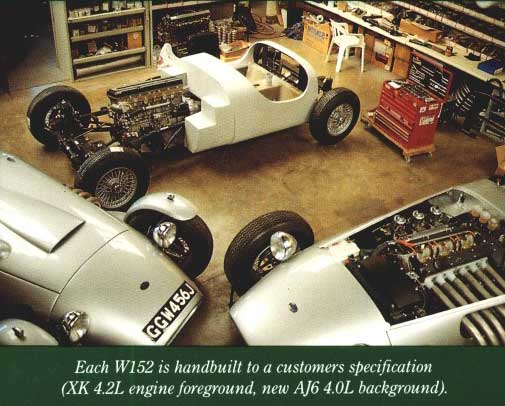 |
|
|
 |
|
|
|
|
|
 |
|
|

|
|
The Seatbelt Anchorage test was carried out to EEC standards in 1997.
This had Manchester University bolt down a W152 car onto their huge test frame. Special seatbelts were then fitted to the body cage and steel chains were connected to a bank of hydraulic rams operated by computer. The hydraulic rams took up the chain slack and the test was ready to start. Video cameras at the ready and then the signal to go. Two seconds later it was all over!!!. The rams applied a combined force of six tons pulling on the two seat belts the result of which was nothing! The ministry chap who witnessed the test remarked upon the fact that there was no deformation of any of the anchorage points, no marking or deformation of the bodywork or the chassis.
This apparently is not usual and so the Ronart W152 not only passed the test but passed it with flying colours.
Our thanks go to the Manchester University Engineering Department and in particular to Ian Hopley and colleagues who carried out the test and to Ian for supplying the information.
|
|
|
|
|
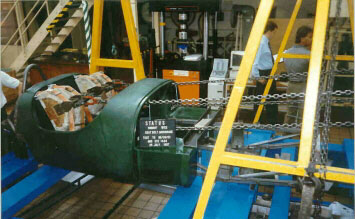 |
|
|
|
 |
|
 |
|
|
|
|
|

|
|
|
| One of the latest W152 orders is for the factory to fit the mechanics of a three week old (1075 miles only) 1998 XK8 V8 and factory build into a W152. This should prove to be a very interesting car but before you jump to conclusions, yes, the car has been rolled and the bodywork beyond economical repair. This will be the first XK8 Jaguar V8 to be fitted and the order may well be modified into a supercharged version. The staff at Ronart are very eager to start building and geting their hands on this one next year! |
|
|
|
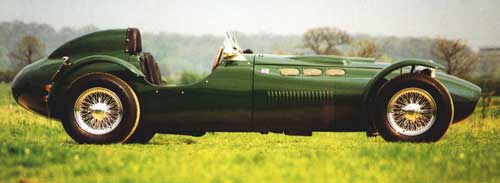 |
|
|
|
 |
|
 |
|
|
|
|
|

|
|
| Mr. Julian Williams called in to the works in his W152 S6 Mk2 which has now notched up 24,000 miles in ten months. He has used the car in all weathers and he certainly gains much enjoyment and pleasure in using the car to its full. Julian mentioned flying in the air on four wheels and he certainly gives the impression that he does not hang about when driving the car. A rear wing/stay suffered as a result of some spirited driving I understand! Since building the Ronart Julian has reported that he has gone through two rear tyres, a set of shock absorber bushes and had the silencer bracket/shield go. Julian recommends 28 PSI on his 215 x 15 AVON CR28 tyres for good all round performance. |
|
|
|
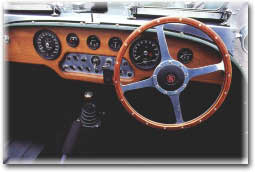 |
|
|
|
 |
|
 |
|
|
|
|
|
|

|
|
|
Ronart recently held an open day at the works and feedback from both prospective customers and owners alike judged the day a success.
Interestingly many of these were Mk2 cars and included the very powerful V12 of Mr. Chris Bellhouse. This car was built from the mechanics of the eighth racing TWR XJS from Tom Walkinshaw with the Jaguar V12 having over 500bhp. The car also features Carbon / Kevlar composite bodywork and some nice ultra lightweight magnesium alloy wheels. Chris certainly has a very fast performance car.
|
|
|
|
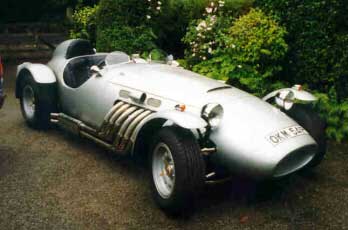 |
|
|
|
 |
|
 |
|
|
|
|
|
|
|
|
|
|
|
|
|
|
|
|
|
|
|
|
|
|
|
|
|
|
|
|